We are thrilled to announce the launch of RFM Analysis – furthering the strength of WebEngage Analytics Stack. RFM stands for Recency, Frequency, and Monetary and is a great way to segment your users on the basis of any specific user event. For example, if you wish to look at the RFM Analysis of your users with respect to their purchase behavior, the system will group all your users based on, how recent is the purchase, how many times was the purchase made, and the monetary value of the purchase.
This Predictive Segmentation feature can help you establish different types of user groups – most valuable users, about to churn, dormant users, etc., leading to precise targeting and better ROI from your marketing spends. Inside the RFM feature, you can save these individual user groups as static lists and then run targeted campaigns for each of them.
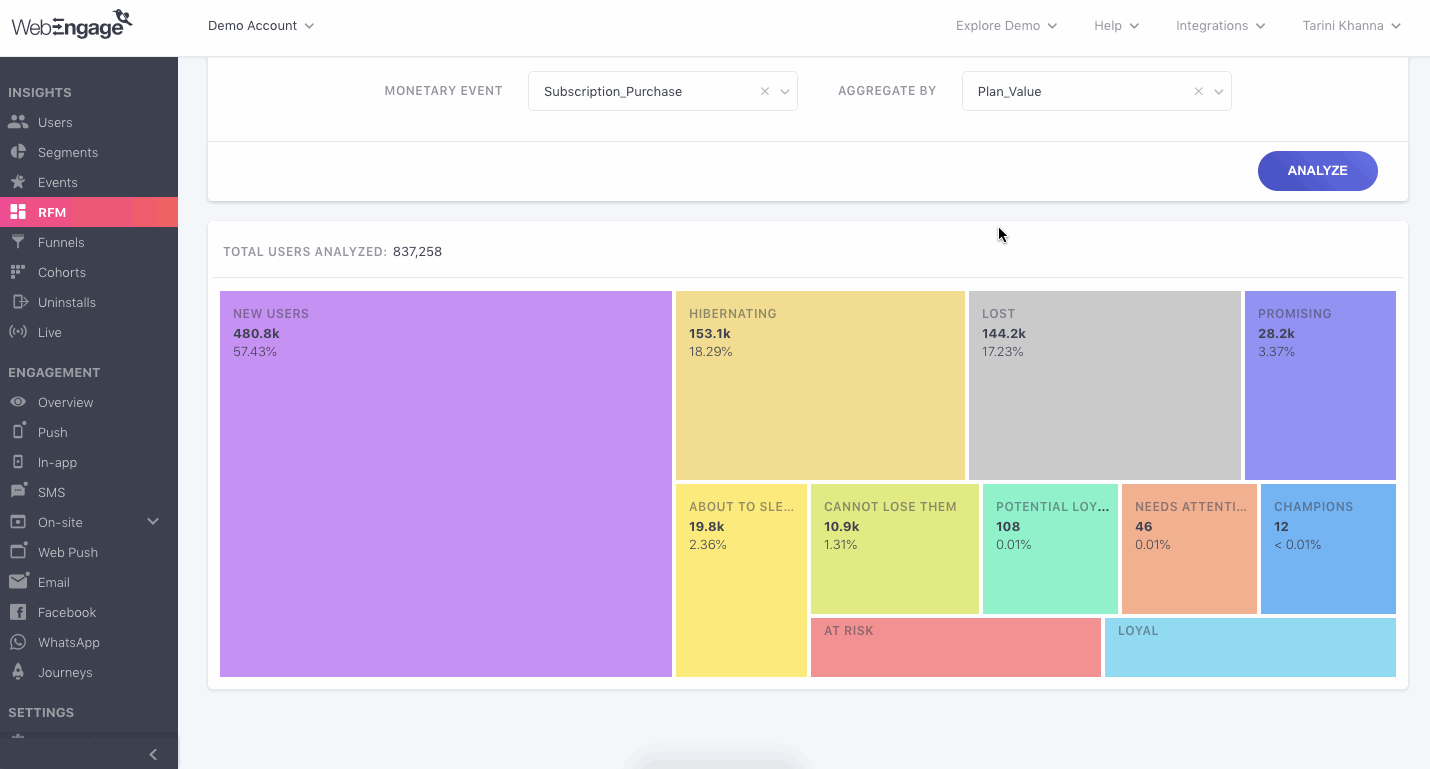
How it works?
Depending on your business needs, you can specify up to 2 Events to define the user behaviour you would like to analyze.
- The first event being the Recency-Frequency Event that groups users into various segments as per the Recency and Frequency at which they performed the event in the last 30 days (this time frame can be changed). This could be signed up, added to cart, order placed, session started, claimed the offer, basically anything important to your business.
- You can then define the Monetary Event along with its Event Attribute that will help you group your users in the relevant RFM segment. For example, you can select ‘Cart Value’ as an attribute for the Monetary Event ‘Checkout – Completed’ and all the users who have performed the monetary event will be analyzed by the actual value of their cart and grouped into different RFM segments.
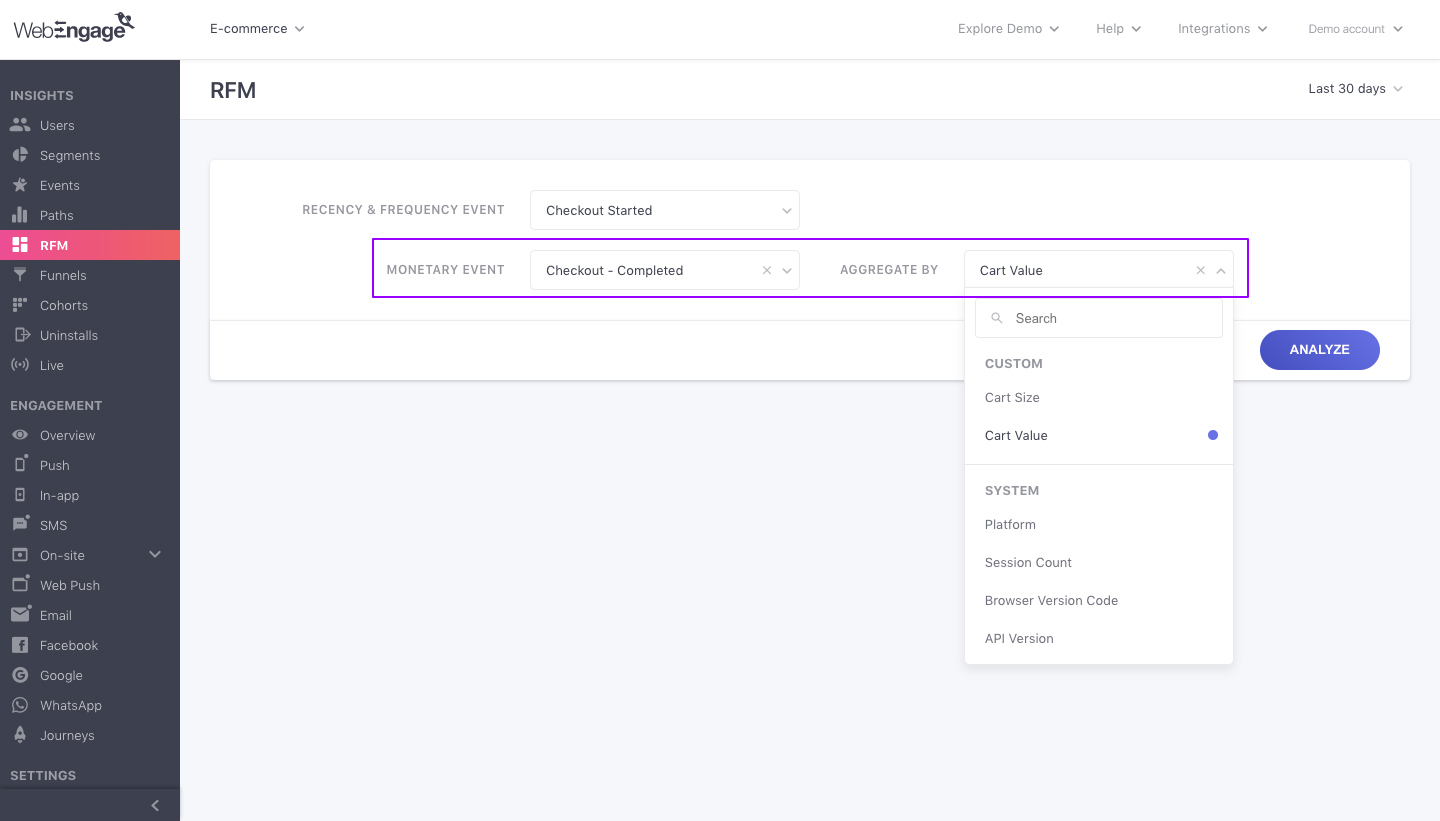
Based on this, our in-house algorithm will:
- Narrow down the target audience to only those who have performed the specified events within the selected time frame.
- Score users against each Event on a scale of 1 – 5 for all the parameters – Recency, Frequency, and Monetary Value. (How R, F, M Scoring Works)
- Predict the likeliness of each user to continue their association with your brand by grouping them into mutually exclusive RFM Segments (Here’s What Each Segment Means)
- Analyze RFM Segments and export relevant ones as individual Static Lists. Create highly personalized campaigns to connect with users in each segment. (Step-by-Step Guide to RFM Analysis)
For a more in-depth overview of how the RFM values are calculated and how they’re then segmented into various groups, please refer to the WebEngage knowledgebase here.
Quick, accurate Segmentation
With the launch of RFM Analysis, we’re automating the ‘user groups identification’ task with an intuitive interface. The major difference with RFM Analysis is not about campaign creation or just Segmentation. WebEngage has been helping businesses with that flawlessly. But what we’re trying to achieve is accuracy, time-saving and better ROI margins. RFM considers recency, frequency, and monetary values for each customer; combines them, and then groups them into different customer segments for easy recall and campaign targeting.
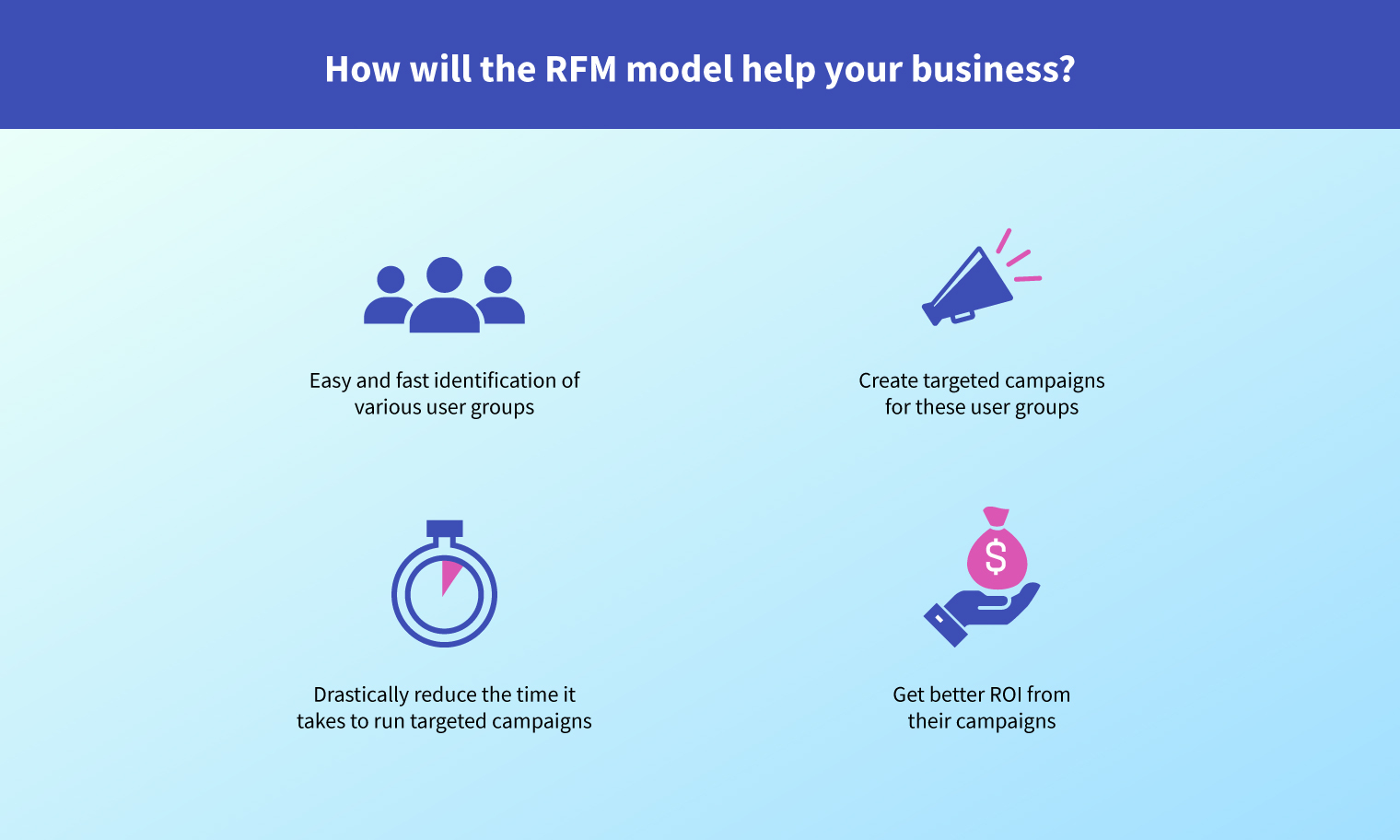
In turn, you’ll be able to get answers to some of the pressing questions such as:
- Who are my most / least valued (or engaged) customers?
- Who are the biggest spenders?
- Which customers have the potential to be converted to more profitable customers?
- Which customers are likely to churn?
- Where do you need to allocate the most resources?
Some use cases of RFM Analysis:
Let’s have a look at some of the ways you can employ RFM Analysis for user insights and better targeting.
1. Identify customers who are about to churn and run campaigns accordingly
In the RFM Analysis, segments such as customers needing attention, hibernating, and about to sleep, all point towards users who are showing negative signs and are possibly on the verge of churning.
Losing these customers would mean a big loss of revenue and as such, there arises an immediate need to resurrect them into buying again from you. Hence, start by identifying these segments as static lists and then run promotional campaigns by sending personalised message to bring them back.
Definition of ‘about to churn’ users as per RFM,
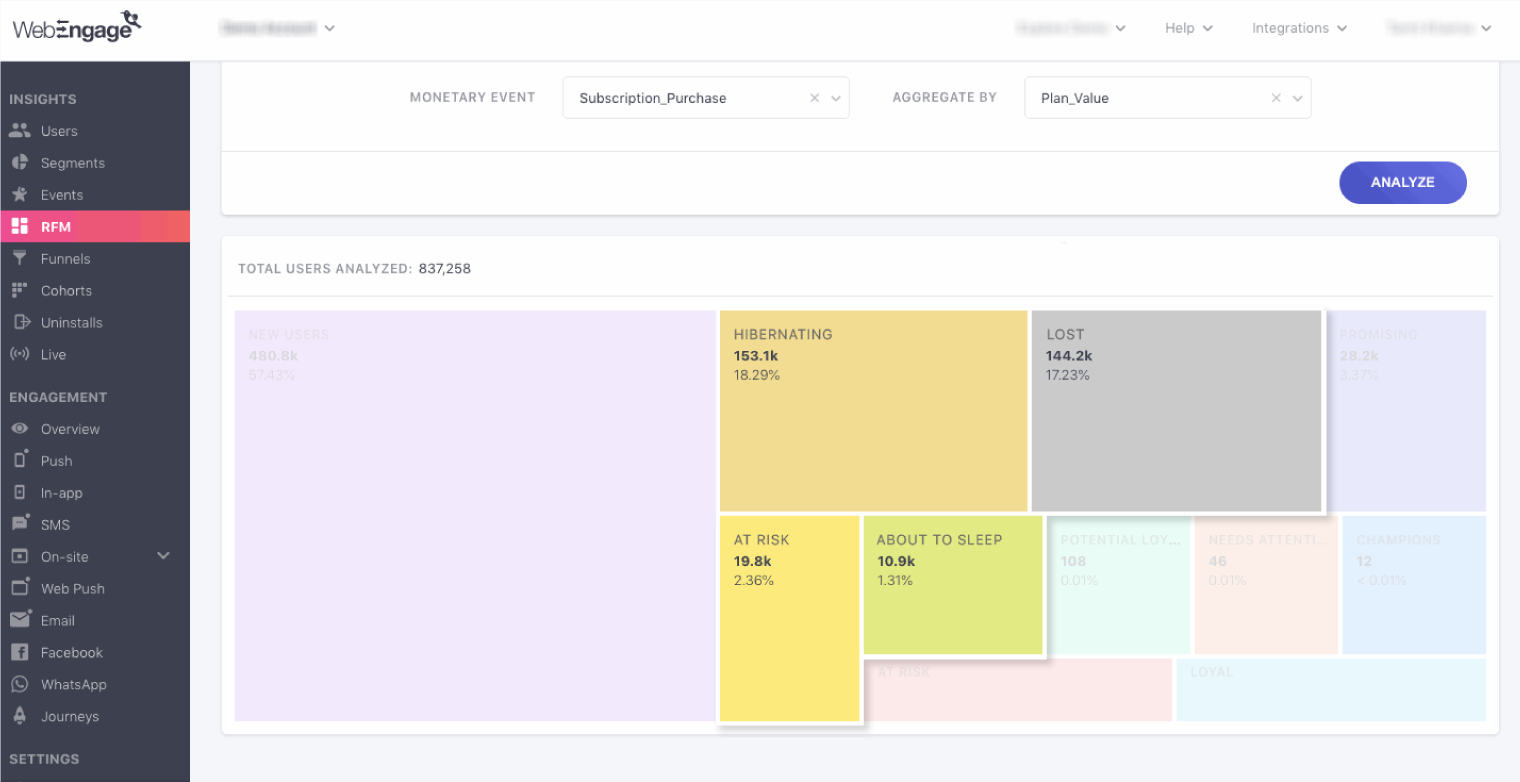
2. Increase conversions by retaining the ‘winning’ user groups
We know that acquiring new customers costs five times as much as retaining existing ones. The loyalty of your customers is roughly based on their frequency and monetary scores. Through your RFM analysis, you would recognize the ‘winning’ groups – Champions, Loyal Customers, Promising, Can’t Lose Them, and Potential Loyalists. These are the groups you can focus on retaining, and you can also expect a high conversion rate given the fact that they are already loyal to your brand.
3. Extend loyalty programs only to your most valuable users
Your premium or the most valuable segment of users are the ones that drive a huge chunk of revenue for you. A great way to consistently extend their Customer Lifetime Value (CLTV) is by offering them loyalty memberships.
Previously, identifying this very specific group of users was a very tedious task, which also might be error-prone. This is where RFM can ease your pains. Easily identify your most promising customers at one click under the RFM section. You can then save this list and start running campaigns for them.
Definition of ‘best users’ as per RFM,
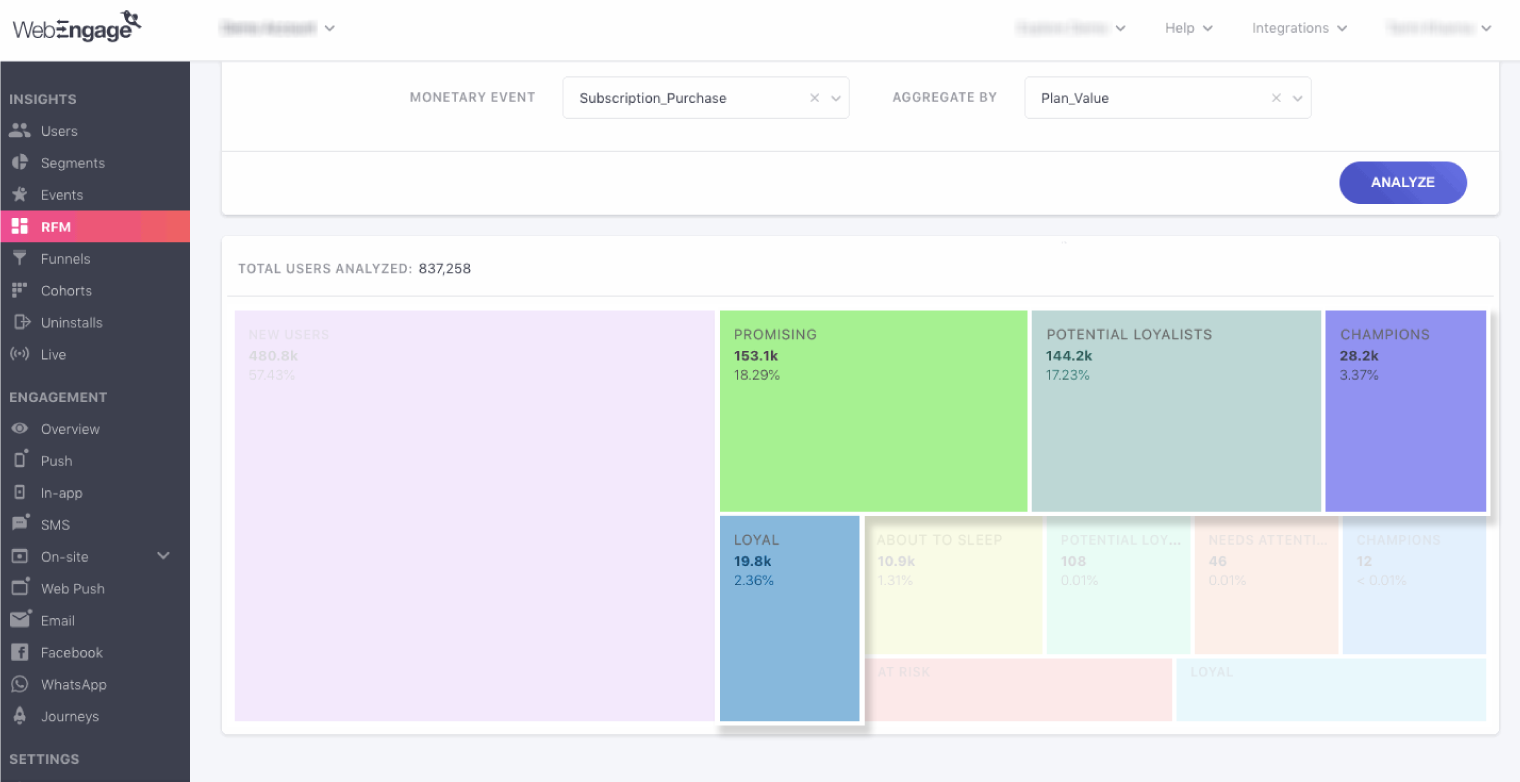
4. Invite your users to take NPS surveys
It’s a common practice to start with identifying an equal mix of promoters, passives, detractors among your user base. Adjust these proportions as you get a better idea of how your own customers are distributed across the three groups.
Identifying them was otherwise a manual and very hectic process. Enter RFM Analysis and within minutes you’ll have a list of your most active, about to churn, or hibernating users, in front of you. Ready to be communicated with for conducting your survey.
5. Allocate resources appropriately to get more out of your existing users
Say, you’ve recently been allocated a certain budget for this quarter. You wish to deploy it for acquiring new users, resurrecting the older dormant ones as well as turning frequent buyers into champions. Now, while there’s no shortage of acquisition channels to spend your budget on, what types of users would you want to resurrect or make champions of?
In RFM, for resurrection, you can direct your resources at segments like hibernating or about to sleep and for finding potential champions, your resources could be deployed at segments like potential loyalists, promising, and loyal.
And finally, what does every segment entail and the actionable tip basis these segments that you can take,
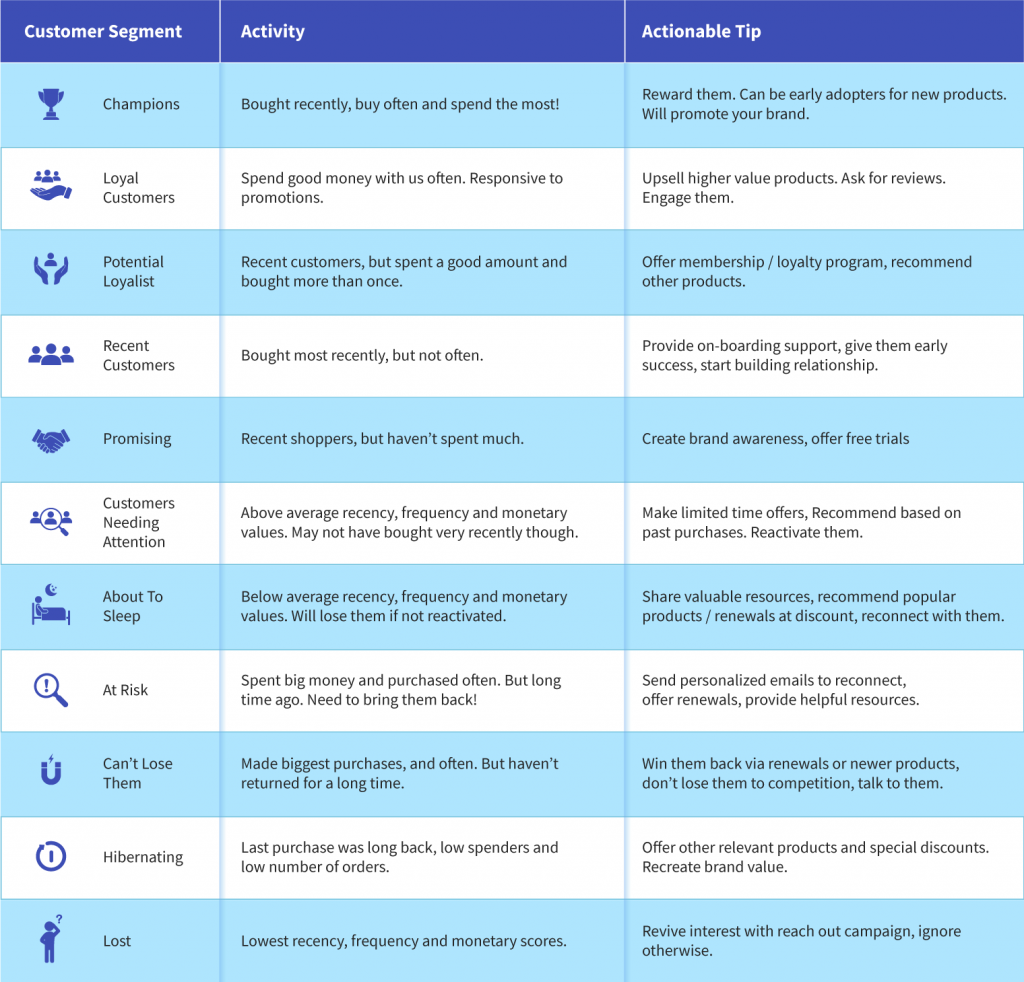
RFM is currently available for selected clients. If you are a WebEngage customer and wish to try out this feature, please reach out to your Customer Success Manager or the Support team (support@webengage.com) for access. Try it out and let us know if you liked using it for your business.
Have any questions or need clarity on how you can use this feature to boost your user engagement and retention? Ask away! We are here to help.
Subscribe to our newsletter to stay updated on the latest in B2C marketing




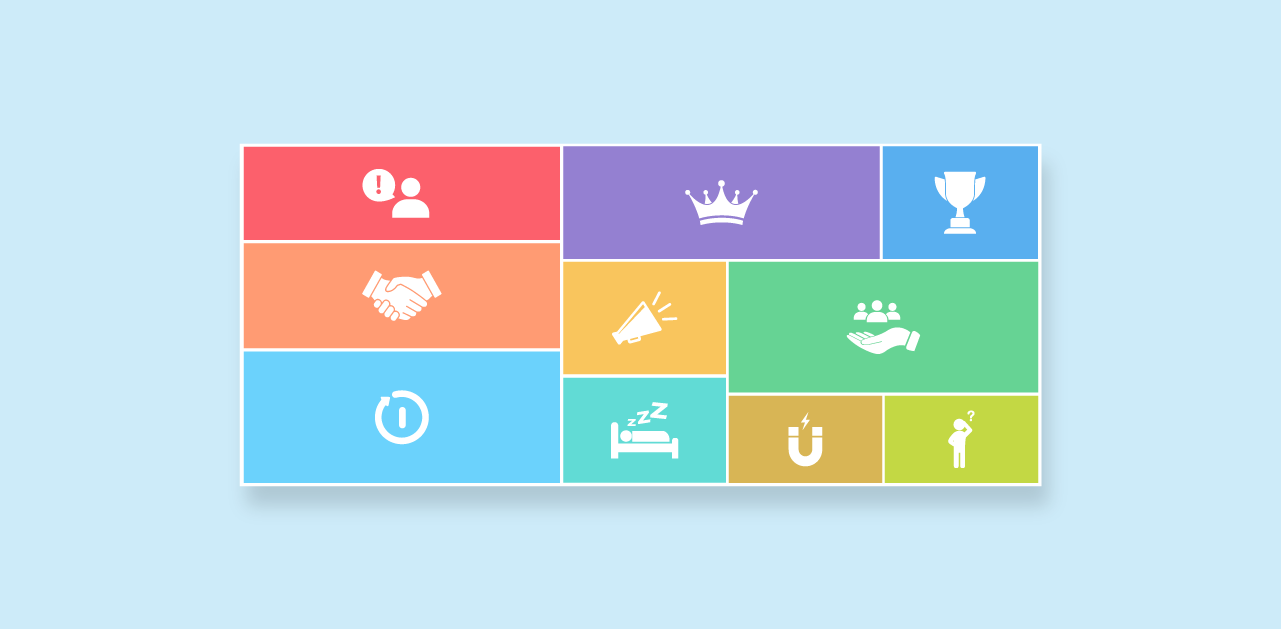
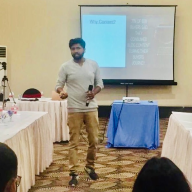
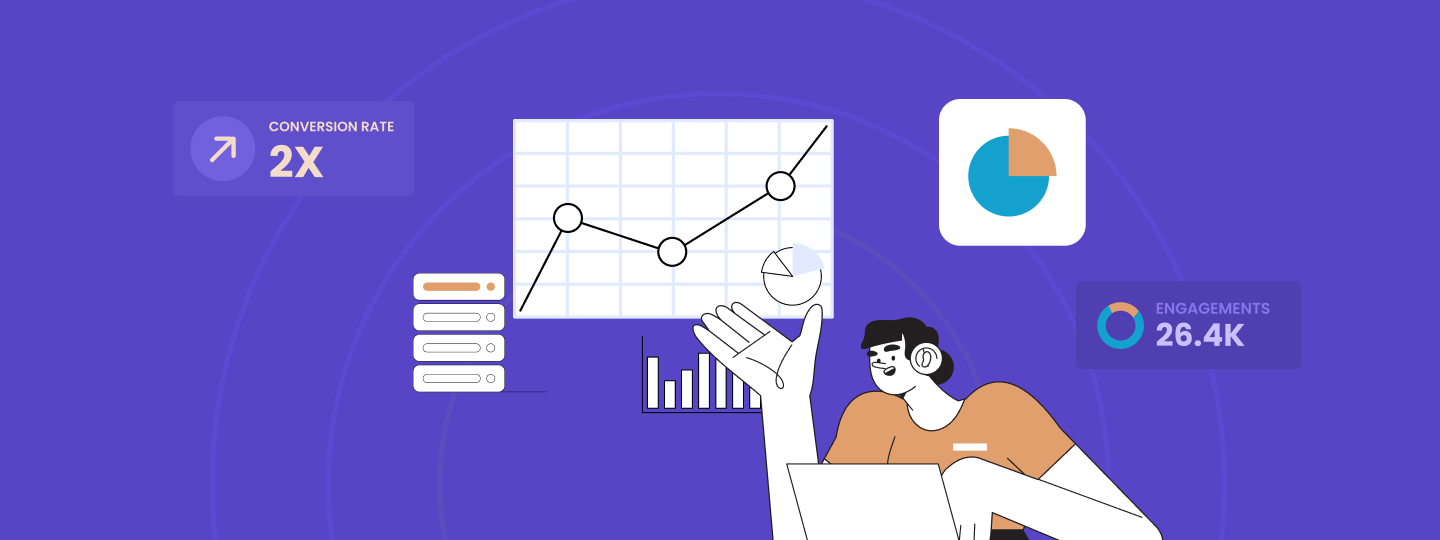
 Harshita Lal
Harshita Lal
 Sanjay Mishra
Sanjay Mishra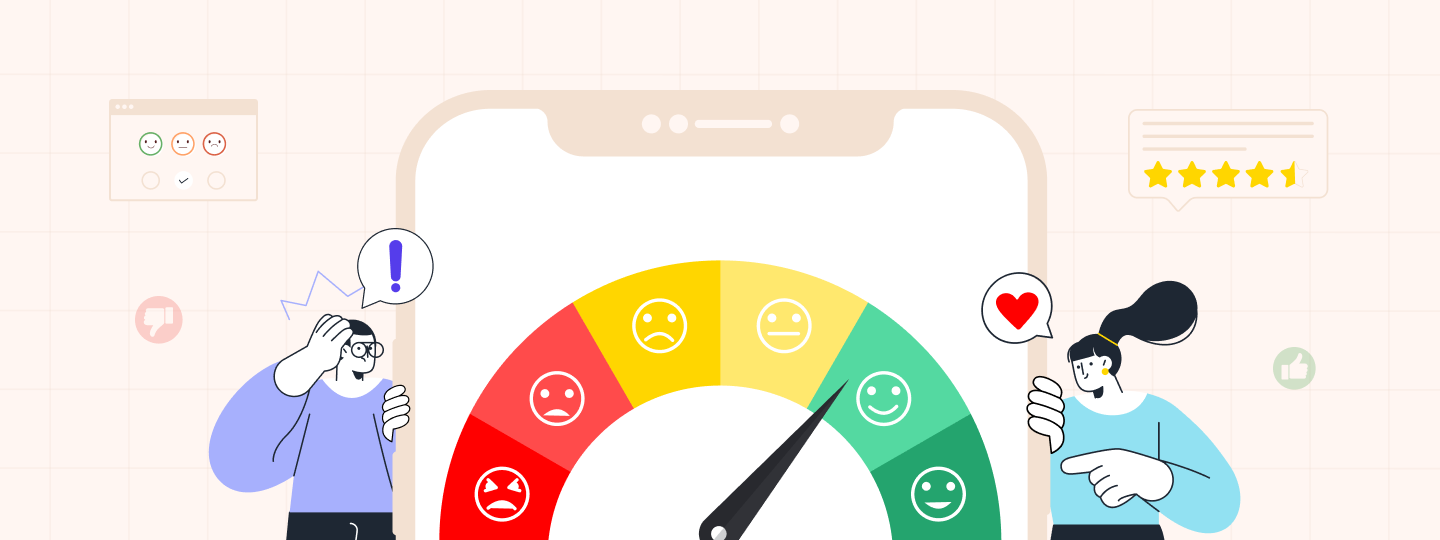
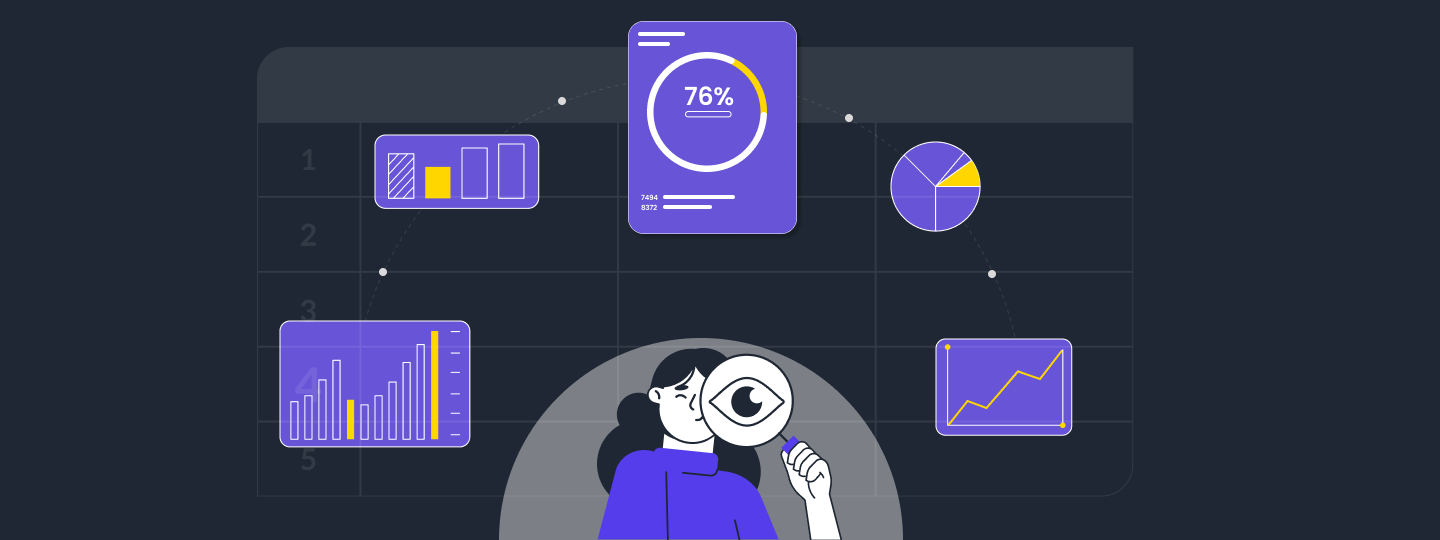

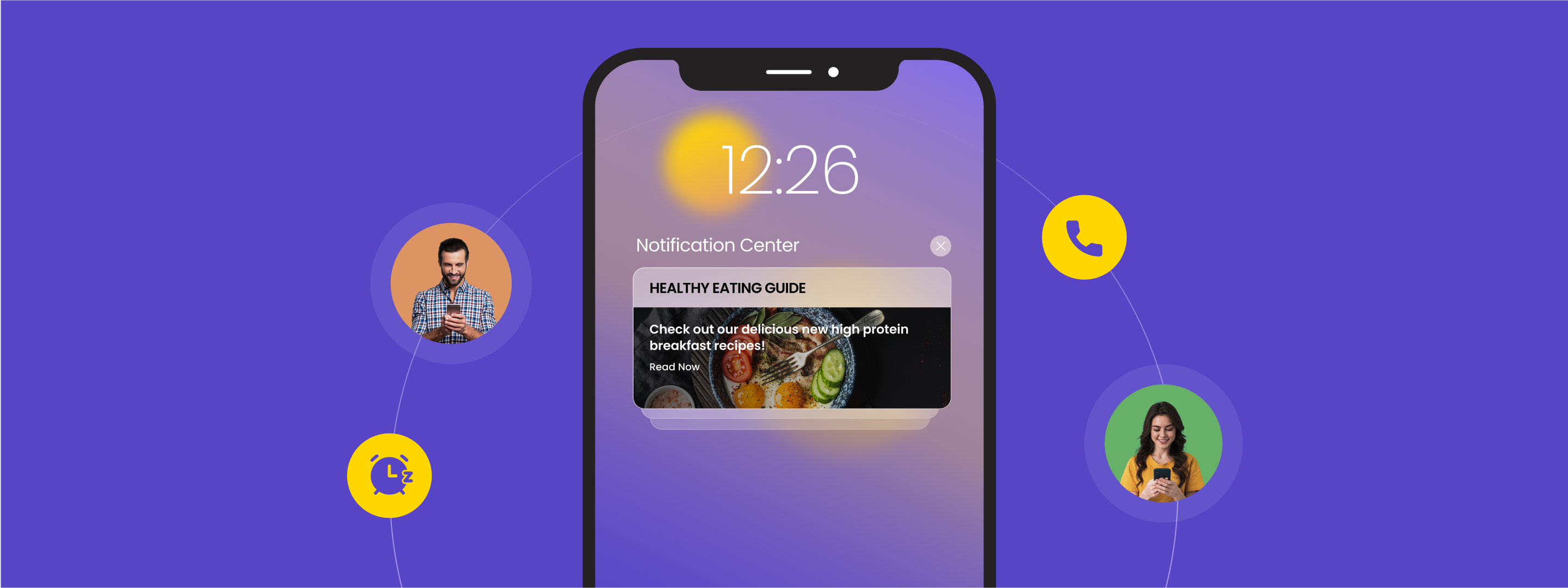
 Prakhya Nair
Prakhya Nair